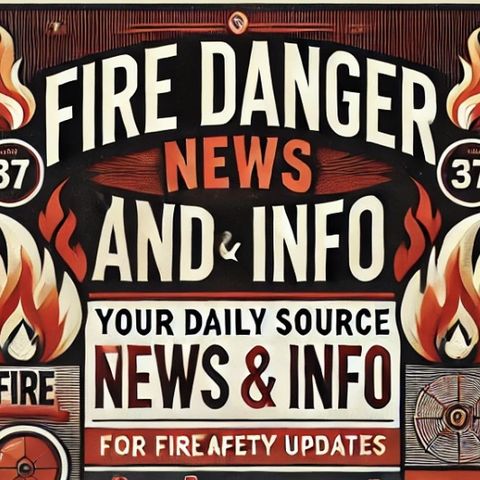Combating Wildfires with USGS Wildland Fire Science

Descarga y escucha en cualquier lugar
Descarga tus episodios favoritos y disfrútalos, ¡dondequiera que estés! Regístrate o inicia sesión ahora para acceder a la escucha sin conexión.
Combating Wildfires with USGS Wildland Fire Science
Esta transcripción es generada automáticamente. Ten en cuenta que no se garantiza una precisión absoluta.
Descripción
Wildfires are a growing concern in the Western United States, where dry conditions, rising temperatures, and changing landscapes have compounded to create a volatile environment for such natural disasters. As...
mostra másUSGS Wildland Fire Science plays a critical role in understanding and managing wildfires through comprehensive research and data collection. The program integrates various scientific disciplines, including hydrology, geology, and biology, to develop predictive models and decision-support tools that assist land managers in preparing for and mitigating wildfires. This interdisciplinary approach is fundamental to crafting strategies that ensure the safety of both human populations and vulnerable ecosystems.
One key area of focus for USGS researchers is fire behavior modeling, which helps predict how fires will spread across complex landscapes. By analyzing variables such as wind patterns, vegetation types, and topography, these models provide valuable insights into potential fire trajectories. Such information is indispensable for emergency responders, allowing them to allocate resources effectively and prioritize areas at greatest risk.
In addition to fire behavior, USGS scientists examine the impacts of wildfires on natural resources and ecosystems. The aftermath of a fire can leave landscapes susceptible to erosion, decreased water quality, and altered habitats. USGS studies these effects to develop rehabilitation techniques that aid in ecosystem recovery while preventing further degradation. For example, understanding the interactions between fire and hydrology assists in predicting floods and landslides, which are common in post-fire environments.
The USGS Wildland Fire Science program also prioritizes the development of new technologies for fire detection and monitoring. Satellite imagery and remote sensing are utilized to assess real-time conditions, offering firefighters precise data on active fires and helping them gauge the effectiveness of suppression efforts. Early warning systems, enhanced by technological innovations, are crucial in reducing response times and minimizing damage.
Public education is another vital component of the USGS's mission. By making scientific knowledge accessible, the program empowers communities in fire-prone areas to implement preventative measures and create wildfire-resilient landscapes. This outreach includes collaborating with local, state, and federal partners to promote best practices in land management, such as controlled burns and fuel reduction, which are essential for mitigating future risks.
Visit the USGS Wildland Fire Science webpage to learn more about how USGS science is making a difference in combating wildfires. Through cutting-edge research and practical applications, USGS continues to contribute significantly towards safeguarding people, property, and the environment from the devastating effects of wildfires across the Western United States.
Información
| Autor | QP-4 |
| Organización | William Corbin |
| Página web | - |
| Etiquetas |
Copyright 2024 - Spreaker Inc. an iHeartMedia Company
